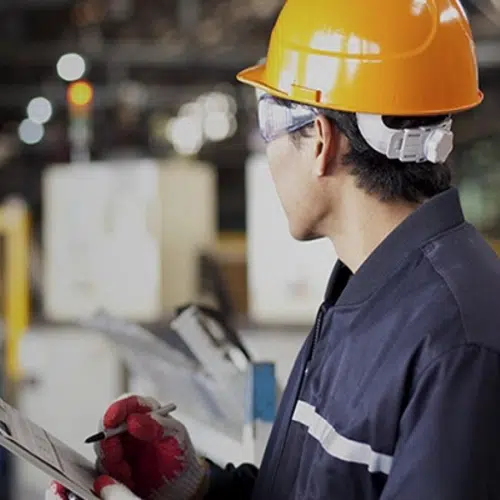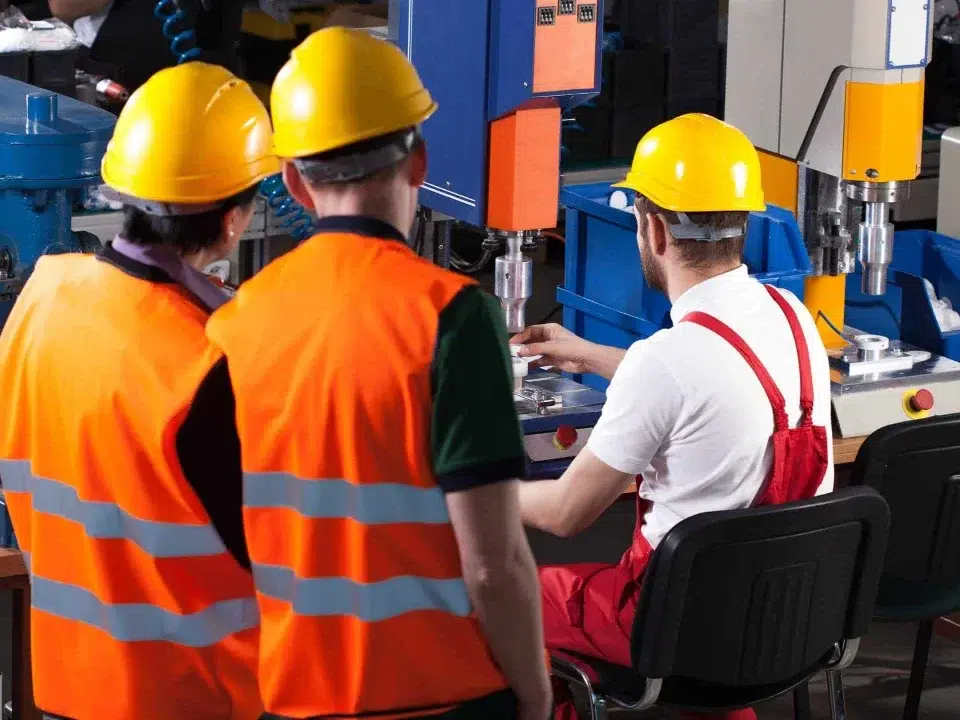Digital & Data-Driven HAZOP: How Innovation Is Transforming Traditional Process Safety Study

Navigating Regulatory Requirements in Electrical Safety Audit
October 25, 2025
Donning and Doffing PPE: Proper Order, Meaning, and Best Practices for Using Personal Protective Equipment
October 31, 2025In the industrial world, safety has always been a non-negotiable priority. But as industries evolve, so must the tools and methods that ensure their safety. For decades, the Hazard and Operability (HAZOP) study has been the backbone of risk assessment in process industries — identifying potential hazards, evaluating consequences, and preventing operational failures.
However, the traditional HAZOP process, while effective, is often time-consuming, document-heavy, and dependent on subjective human judgment. The shift toward digital and data-driven HAZOP marks a fundamental transformation — merging safety engineering with advanced technologies like Artificial Intelligence (AI), Internet of Things (IoT), and big data analytics.
This fusion not only enhances the accuracy of safety assessments but also enables continuous monitoring, smarter decision-making, and predictive risk management.
Understanding the Traditional HAZOP Framework
A Hazop Study systematically identifies potential hazards and operability issues in industrial processes. Traditionally, it’s a qualitative approach led by a multidisciplinary team who review every deviation from the intended design — such as pressure, temperature, flow, or chemical concentration changes — to predict possible failures.
This process typically includes:
- Gathering design data and process diagrams
- Conducting brainstorming sessions using guidewords like “more,” “less,” “no,” or “reverse”
- Documenting deviations and identifying causes and consequences
- Recommending corrective or preventive measures
While this approach has prevented countless accidents and improved safety culture across industries, it faces significant challenges:
- Time-intensive: Traditional HAZOPs can take weeks or months to complete for complex plants.
- Data fragmentation: Safety information often exists across disconnected systems or paper records.
- Human error: Reliance on subjective judgment introduces variability.
- Limited updates: Once the study is complete, it’s rarely revisited unless major changes occur.
These challenges make the case clear: the future of safety management requires a smarter, more connected, and data-driven approach.
Enter the Digital Era of Process Safety
With Industry 4.0 technologies reshaping industrial operations, process safety is undergoing a digital transformation. Organizations now leverage automation, real-time analytics, and digital twins to enhance accuracy and efficiency.
Digital and data-driven HAZOP integrates these technologies to create a living, continuously evolving safety model — replacing static documentation with intelligent insights.
Key Drivers of Digital Transformation in HAZOP:
- Automation and AI: Automates repetitive tasks like data entry, cross-referencing, and deviation analysis, freeing human experts to focus on strategic decision-making.
- Data Integration: Merges process data from DCS, SCADA, and IoT systems to provide a holistic view of operations.
- Predictive Analytics: Uses machine learning algorithms to detect patterns and predict deviations before they cause harm.
- Collaboration Platforms: Cloud-based systems allow global teams to collaborate in real-time, reducing delays.
- Visualization Tools: Digital twins and 3D models bring process data to life, making hazard identification faster and more intuitive.
This transformation not only improves the quality of HAZOP studies but also extends their impact far beyond initial project design.
Digital HAZOP: How It Works
The digital HAZOP process is not a replacement for human expertise — it’s an enhancement. It combines traditional engineering logic with digital intelligence, resulting in a continuous feedback loop of data and learning.
Step 1: Data Integration and Model Building
A digital twin of the plant is created, using real-time data from sensors, control systems, and process documents. This model mirrors actual operations, enabling engineers to visualize deviations, simulate failures, and assess their consequences instantly.
Step 2: AI-Based Deviation Analysis
AI algorithms process thousands of data points to identify abnormal conditions or parameter deviations that could lead to hazards. This reduces the need for manual brainstorming and ensures no critical scenario is overlooked.
Step 3: Risk Prioritization
Machine learning tools rank potential hazards based on probability, severity, and detectability. This helps decision-makers allocate resources efficiently, focusing on the most critical risks first.
Step 4: Digital Documentation and Collaboration
All observations, control measures, and recommendations are stored in a centralized, cloud-based repository. Teams can update, track, and share safety information seamlessly, improving communication between design, operation, and maintenance personnel.
Step 5: Continuous Monitoring and Updates
Unlike traditional one-time assessments, digital HAZOP connects to live operational data, updating risk profiles dynamically as process conditions change.
This ongoing feedback mechanism transforms safety from a static compliance activity into an active, adaptive system.
Benefits of a Data-Driven HAZOP Approach
The shift from manual to digital safety management provides measurable advantages across efficiency, accuracy, and reliability.
1. Enhanced Accuracy and Objectivity
AI-powered analysis minimizes human bias and ensures consistent results. Complex interdependencies between process variables are identified with higher precision than traditional manual reviews.
2. Significant Time Savings
Automated data extraction and processing reduce analysis time by 40–60%. What once took months can now be completed in weeks without compromising detail.
3. Real-Time Risk Visibility
Integration with plant sensors and control systems offers continuous monitoring. Operators can detect early warning signs, reducing the likelihood of catastrophic failures.
4. Streamlined Communication
Cloud-based platforms foster collaboration among multi-disciplinary teams across different locations. Everyone works on the same digital model, ensuring transparency and accountability.
5. Sustainability and Compliance
Digital records reduce paperwork, simplify audits, and provide traceable evidence for regulatory compliance. Continuous improvement becomes easier with version tracking and historical trend analysis.
Role of Data Analytics and AI in Modern HAZOP
Artificial Intelligence and advanced data analytics are the backbone of modern process safety.
AI can analyze vast amounts of operational data to identify subtle deviations that human observers might miss. Predictive algorithms detect emerging risks, simulate “what-if” scenarios, and recommend preventive actions before a failure occurs.
For example:
- Machine learning models predict corrosion, over-pressure, or leak risks based on operational history.
- Natural language processing tools automatically extract information from historical safety reports.
- AI-driven dashboards visualize dynamic risk levels, supporting real-time decision-making.
This data-centric approach ensures that HAZOP evolves from a reactive investigation to a proactive safeguard.
Integration with Process Safety Management (PSM)
A digital HAZOP becomes even more powerful when integrated within the broader framework of Process Safety Management.
PSM involves systematically managing the integrity of operating systems and processes handling hazardous substances. Digital tools can bridge the gap between HAZOP findings and ongoing PSM activities such as:
- Change management
- Incident investigation
- Mechanical integrity tracking
- Training and competency management
When digital HAZOP data flows directly into PSM dashboards, organizations gain a 360-degree view of safety performance — linking every hazard, control, and action item in real-time.
How Fire and Safety Audits Complement Digital HAZOP
While digital HAZOP focuses on process risk assessment, complementary audits strengthen overall safety management.
A Fire Audit identifies fire hazards, evaluates emergency preparedness, and checks compliance with safety codes. When integrated with digital systems, fire risk data can be analyzed alongside process safety information to detect interconnected vulnerabilities.
Similarly, a Safety Audit provides a comprehensive evaluation of workplace safety standards, systems, and practices. Combining these audit results with digital HAZOP insights enables better risk prioritization and continuous improvement across departments.
In essence, these digital integrations create a unified ecosystem of safety — one that connects process safety, fire safety, and occupational health under a single digital umbrella.
The Role of Safety Consultants in This Transformation
Digital transformation in safety doesn’t happen overnight. It requires technical expertise, strategic guidance, and practical implementation. This is where a trusted Safety Consultant plays a pivotal role.
Safety consultants help organizations transition from traditional to digital systems by:
- Assessing existing safety maturity and digital readiness
- Designing customized frameworks for data integration and digital audits
- Training teams to interpret AI-generated safety insights
- Ensuring compliance with national and international safety standards
- Providing end-to-end project management for digital HAZOP execution
By bridging the gap between engineering experience and digital innovation, professional safety consultants enable industries to implement technology-driven safety programs that deliver real results.
Case Example: Digital HAZOP in a Chemical Manufacturing Plant
Consider a large-scale chemical manufacturer that traditionally conducted HAZOP studies using manual spreadsheets and static diagrams. The company transitioned to a digital HAZOP system integrated with IoT sensors and process control data.
Within six months, the organization achieved:
- 50% faster HAZOP completion time
- Real-time deviation alerts when pressure or temperature exceeded thresholds
- Centralized audit trail for regulators and internal reviews
- Predictive maintenance scheduling, preventing multiple near-miss incidents
This example demonstrates the tangible benefits of moving toward a connected, data-driven safety culture.
Challenges and Considerations in Adopting Digital HAZOP
Despite the clear benefits, digital transformation requires thoughtful planning. Some challenges include:
- Data quality and integration issues across legacy systems
- Cybersecurity risks, as more data is stored online
- Change management, requiring cultural and procedural adaptation
- Initial costs for software, training, and infrastructure
However, these challenges can be mitigated through phased implementation, robust cybersecurity measures, and strong leadership commitment. Partnering with experienced safety consultants further ensures smooth adoption.
The Future of HAZOP: Smarter, Faster, and Continuous
The next generation of HAZOP studies will be fully digital, data-driven, and integrated into everyday operations. We can expect to see:
- Automated HAZOP updates triggered by process changes or incident reports
- Augmented reality (AR) interfaces for immersive safety visualization
- Blockchain-based traceability for audit integrity
- Cross-plant analytics to identify systemic risks across global sites
Ultimately, digital and data-driven HAZOP is not just about upgrading tools — it’s about evolving safety culture. It transforms safety from a periodic compliance exercise into a living, learning system that continuously protects people, assets, and the environment.
Conclusion
As industries face increasing operational complexity, the need for smarter, data-driven safety systems has never been greater. Digital HAZOP represents a paradigm shift — from reactive hazard identification to proactive risk management.
By integrating AI, IoT, and analytics, organizations can achieve faster, more accurate, and continuously improving safety outcomes. When combined with Fire Audits, Safety Audits, and robust Process Safety Management, this approach creates a holistic safety ecosystem capable of adapting to modern industrial challenges.
The future of process safety belongs to those who embrace innovation today. With expert guidance from The Safety Master, companies can make this transition confidently — building safer, smarter, and more sustainable operations for the long term.



